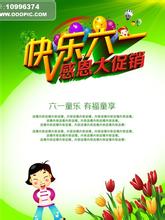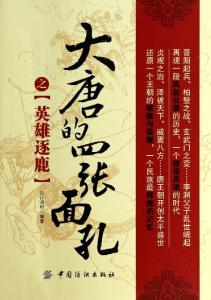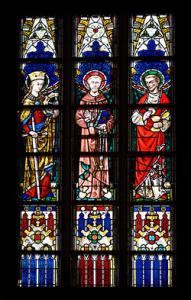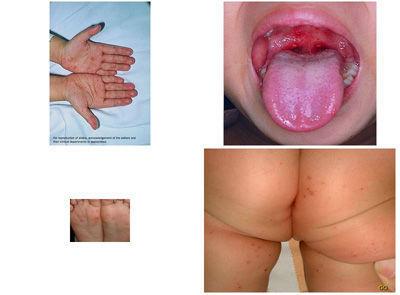Abstract:This article discusses the relation between the heart theory of traditional Chinese medicine (TCM)and modern medicine from the anatomy, physiology and pathology. At the same time, the relation between the viscera relationship in the heart theory and modern medicine are also discussed. We try to look for the evidences from the theories of modern medicine, so as to strengthen awareness and understanding of the theory of TCM for medical students.
Key words:the heart theory of traditional Chinese medicine; the viscera relationship; modern medicine
There is the exposition on the heart of Traditional Chinese Medicine(TCM) largely focused on visceral doctrine. The content involves the body's circulatory system, nervous system and other systems, which also involves the philosophy and other sciences. It plays an important role that the philosophy or other disciplines of knowledge on the interpretation of TCM theory, but it also brings the modern medical students difficulties to understand TCM theory ,who have the relatively narrow knowledge. Hence we try to look for the interpretation of TCM theory basis from modern medicine theories, so as to link the Heart theory of TCM to modern medicine.
1 the relation between the Heart theory of TCM and Anatomy
TCM believes that heart is located in the thoracic cavity and between the two lungs and on the top of the liver, whose appearance likes a Lotus Flower that is upside down and unopened , guarded externally by the pericardium. The above view is basically consistent with modern anatomy. When discussing the heart system theory of TCM and the relationship of restriction and generation in the five elements ,it constantly involves connection between the heart and blood vessels. Heart system, broadly, refers to connection vessels between the heart and other organs of organizations. The heart system was interpreted, by Zhang Jie-bin, as: "heart is under the five vertebral, its system has five parts, one part of them is connected up the lung, the lung is connected down the heart, the heart is connected down next three lines including the spleen, the liver and the kidney. In discussing the relationship of restriction and generation among the five visceras, TCM believes that the heart governs blood and pulse, and also governs kidney, heart is governed by lung,lung is governed by liver, liver is governed by spleen, and spleen is governed by kidney[5].Heart governs kidney, which may be regarded as heart dominants kidney through the renal artery. In addition,it also indicates the dependence of kidney on heart that bilateral renal blood flow accounts for approximately 1/4 of cardiac output. Kidney governs spleen, which may be held the view that the spleen- kidney ligament arrives at spleen door from kidney, in which splenic artery supply the blood to spleen. In addition, renal vein ,in the process of entering Vena cava, also imports splenic vein through extensive collateral circulation. Spleen governs liver, which can be thought that splenic vein imports hepatic Portal vein. Splenic vein is the main branch of Portal vein, whose return flow directly affects liver sinusoidal output. Liver governs lungs, which can be thought that the blood of hepatic venous flows into the vena cava, which enters right heart through the pulmonary artery. Lungs govern heart, which may be regarded as four Pulmonary veins from the lung into the left atrium, directly controlling cardiac output.
It is not accidental that both the flow direction and the governable relations of above systems,in order, are surprisingly similar to modern anatomy. It is probably that the ancients make a conclusion after combining the initial knowledge of anatomy with long term observation on physical and pathological phenomena.
2the relation between the Heart theory of TCM and Physiology or pathology
2.1 The heart controls blood circulation Chinese medicine believes that the heart gives motive power for blood circulation, and which motive power is known as heart -qi. " Qi-running is followed by blood-circulating "," blood stasis due to stagnation of Qi" which are the different manifestations in the circulation under the normal or low state of heart -qi. Chinese medicine believes that clear-qi belongs to Yang and turbid-qi belongs to Yin[6],We regard the Yang-qi of heart(clear-qi) as oxygen and the Yin- qi of heart(turbid-qi) as carbon dioxide,according to the substance properties of qi.If heart-qi is normal, Cardiac function will be good and the blood oxygen saturation will be high, meanwhile tissue perfusion will be fully. Conversely, if tissue perfusion is lower, CO2 concentration will increase,and blood vessels will be dilated and paralysed, meanwhile blood will be stagnated.
2.2 The heart governs the mind. TCM believes that heart controls the function of the five Zang- organs and six Fu-organs and is in charge of the activities of human life. TCM also believes that heart controls the function of the mental consciousness and thinking activities.The former is completed by the heart governing the mind. The latter is easily confused with brain function. Here it should be pointed out that the five viscera are related to feeling and consciousness. It is said by Suwen·Xuanming Wuqi pian that the mind is stored in the heart,the spirit is stored in the lung,the mood is stored in the liver,the mental activities is stored in the spleen and the memory is stored in the kidney. Suwen·Maiyao Jingwei Lun also says that the head is smart house and the smart means the mind. Meanwhile Suwen·Linlan Midian Lun again stresses that the heart is the monarch of all the organs and the heart is a exiting part of the mind. It can therefore be assumed that the head would be smart house, the heart would be a exiting part of the mind, the lung would be a exiting part of the spirit,the liver would be a exiting part of mood and so on. If this assumption is established, this point will coincide with the reflex arc theory of modern medicine. From the reflex arc theory: The feelings including the mind, the spirit, the mood, the mental activities and the memory are issued by the sensor of five organs respectively. These feelings,which enter the brain from afferent nerve , are integrated in the brain, then they reach the effector of all body by their efferent nerve ,in order to complete the process of awareness and perception.The heart is like the God of body. Symptom with sense of "dying", during Myocardial lesions, is full enough to illustrates essence that the heart dominates life. Meanwhile if there is not Myocardial lesions,the symptom with sense of "dying" will not be produced during pulmonary encephalopathy, hepatic encephalopathy or uremic encephalopathy attacks.
The theory that the heart governs the mind has been confirmed by a thousand years of clinical practice. Although it is difficult to explain the exact meaning of the theory, modern medicine has still revealed many unique characteristics between the heart and brain. Firstly, from the perspective of cellular regeneration,both myocardial cells and neurons are permanent cell. Their quantity is fixed in the embryonic stage, after birth of body, myocardial cells and nerve cells have only reduced and not regenerated. Secondly, from the perspective of the ion channel in cell membrane, both sodium channels and calcium channels of Myocardial cells are very similar to those of nerve cells. For many drugs acting on myocardial electrophysiology is the same effect on neural electrophysiology. And the sodium channels or calcium channels in skeletal muscle cells and smooth muscle-glands cells are very different with those in heart and brain cells. Moreover,from the point of view on ligand and receptor rear, catecholamines (such as dopamine and norepinephrine) have very obviously effect on myocardial cells and neurons cells.
In recent years, many scholars also believed that second-messenger ,CAMP, can be used as the physical basis of the heart governing the mind[7-8]. The brain natriuretic peptide is firstly isolated and purified from the brain. Later, it is isolated from the myocardium. And the brain natriuretic peptide is confirmed that the amount of myocardial secretion is more than cerebral secretion. The brain natriuretic peptide has effect of vasodilator, diuretic and antihypertension, which is the importance to protect the heart and brain. Neuromodulation has a little impact on the blood supply of heart and brain. Self-adjustment is the main method of blood supply of heart and brain [10]. When stress,the vast majority of blood vessels of the body are constricted, but the blood vessels of heart and brain are dilated passively at the same time. This reallocation of systemic blood flow is necessary to ensure blood supply of heart and brain[11] . This kind of special grace to heart and brain is inevitable choice during biological genetic process.
2.3 The heart corresponds to the fireThe heart Qi connects summer[5]. The Five-Elements properties of the heart is the fire. It is the essence of the heart that heart has the property of fire. Heart is like the light which never turns off during a life. The work of the heart is shining for a light life. Whatever reasons induce heart fire to be extinguished, which is considered as the end of life. The basic fuels of maintaining the bright light are Qi,blood,nutrition and body fluid, which are limited in body. The basic condition of nourishing the heart is Yin and Yang in a harmonious state. From the view of modern medicine, in order to maintain stable of the internal environment of body and to keep non-regeneration myocardium beating continuously, the basic condition of nourishing the heart,which is also called nourishing the fire, is to save fuel. Specifically the nourishing heart is reducing myocardial oxygen consumption. At present the nourishing heart, or called inhibiting heart (reducing myocardial oxygen consumption), has become the general therapeutical principle of heart disease in modern medical treatment. Currently among the drugs to treat heart disease, except that a small amount of digitalis has also been applied within limits, the rest of therapeutic drugs for heart disease have action on inhibiting heart function or reducing the heart burden. Another characteristic for heart corresponding to the fire is autorhythmicity.
The autorhythmic cells of body mainly exist in the myocardium and intestinal smooth muscle (the heart and intestine being exteriorly and interiorly related). The basic electrical rhythm of intestinal smooth muscle (autorhythmic frequency) is only 8-12 times/min, and the myocardium is up to 60-100 times /min. The heart autorhythmicity stresses both the automatism and non-standstill. Once the fire be lit up, the autorhythmicity and non-standstill of heart will be obvious. The autorhythmic beating of heart is the basic condition to push about circulation and nurture body,and is also the appearance of the fire which never extinguishes.
The heart connects summer- Qi. Its visceral-Qi is practically the Yang-Qi within Sun. In summer the Yang-Qi is the strongest, which is beneficial to recover weak heart-Qi. Heart disease , reality,often become improved in summer. From the theory of modern medicine, the higher temperature of environment easily results in expansion of peripheral vascular of body in summer, these reduction of Cardiovascular burden make the heart illness tendency to be more stable[12]. On the contrary, there is a phenomenon that the heart diseases, including heart failure, coronary artery disease, angina and hypertension, become deterioration in winter. Besides, the heart is in charge of the sweat fluid and the heart is aversion to heat as a result of the characteristics of Yang organs. In summer, pathogenic heat may easily consume and exhaust the blood of the heart, causing coma, delirium, mania. These clinical manifestations is similar to hyperosmolar coma which is heat stroke resulted from sweat dehydration in summer.
2.4 The tongue as the window of the heart It is said by Lingshu·Maidu that the heart-Qi connects with the tongue, if the heart is normal,the tongue will identify five kinds of flavors. There is also another statement that the tip of tongue belongs to the heart and the tongue is the sprout to the heart. The tongue is rich in the blood, which may serves as the window of the observing the ischemia and hypoxia of circulatory system. These standpoints are consistent with the views of points of modern diagnostics. One of the evidences on the tongue as the window of the heart is the measurement of cycle time between arm and tongue:Get 10% glucose 5mL, with saccharin 2.5g. These agents are injected into middle vein of upper limb by intravenous injection slowly, and cycle time is recorded simultaneously. When it is reported that patient's tongue tastes sweet,discontinue recording time with Stopwatch. The normal value is from 10 to 17 seconds.If the cycle time exceeds 20 seconds,the patients are considered as left heart failure, exudative or constrictive pericarditis. If the cycle time is less than 10 seconds, the patients are considered as various diseases accompanied by increase in cardiac output such as hyperthyroidism, anemia, arteriovenous fistula, etc. In addition, it is also seen in congenital heart disease such as tetralogy of fallot, etc[13].The normal cycle time of the arm to the tongue may be seen in the only right heart failure.If the one is complicated with left heart failure at the same time, the cycle time will be significantly prolonged.
3 The relation between the viscera relationship in the heart theory and modern medicine
3.1 The heart and the small intestine form a relationship of exterior and interior, which means that the heart and small intestine constitute the relationship between exterior and interior through the system of channels and collaterals. It is said by Lingshu·Benshu that the heart is connected, in functional, with the small intestine which receives both transformation and absorption of the food contents. The containing of the small intestine is divided into two types: one type is to receive contents from the stomach, the other type is to receive circulation volume of the body with the blood vessels of the intestine wall. The heart has overloaded when congestive heart failure. In this condition, the small intestine may receive circulation volume of the body and reduce overload of the heart, since the heart and small intestine constitute the relationship between exterior and interior. This view is exactly consistent with thinking of modern medicine that the one of therapeutic methods of heart failure is to reduce heart load. The small intestine of adult is 7-9 m in length and has the enormous surface area, which is the main part of the systemic capacity vessels and is also the main part of the buffering returned blood volume,purging heart-blood and lowering cardiac preload. Accompanied by reducing of pulmonary blood volume and reducing of returned blood volume, the symptoms of dyspnea will gradually be eased. At the same time,the excessive returned blood volume received by small intestine may result in congestion of intestine and symptoms of indigestion, but this is a clear signal of requiring to lower load of digestive tract by limiting the intake of the body , this is only way to meet the low load state of the heart. This is the relationship of exterior and interior between the heart and the small intestine, the small intestine is also necessary to low load when the heart is in low-load state.Other particular connection involving between heart and small intestine is as follows: both heart and small intestine are of autorhythmicity and are of electrical synapse in tissue. The myocardium can secrete a P-material which effects on intestine selectively and promotes the movement of small intestine[7].The small intestine can also secrete a vasoactive intestinal peptide, which enhances myocardial contractility.
3.2 Coordination between the heart and the kidney
Coordination between the heart and the kidney, which is also called coordination between water and fire. According to the five elements theory, the heart belongs to fire and the kidney belongs to water. They are categorized as possessing yang and yin properties respectively. The heart and the kidney are closely related, with a mutually dependent and restrictive correlation within each other. This close relationship is called coordination between the heart and the kidney. There are many modern medical evidences for supporting theory of coordination between the heart and kidney.
Modern medicine studies have showed that the heart and the kidney , as the organs of the body which control effective circulation and maintain homeostasis, are capable of interdependence and interaction mutually on the physiological function.
These views are completely consistent with intersects between the heart and the kidney. As far as the heart is concerned, firstly it is necessary to control circulating blood volume so as to adjust the renal blood perfusion. Secondly, the heart may regulate renal blood flow and Glomerular filtration rate by atrial natriuretic peptide.Thirdly, the heart may regulate glomerular filtration rate, renal tubular reabsorption and secretion of Renin by cardiac-renal nerve reflex[16]. As far as the kidney is concerned, firstly it may control multiple parameters in plasma osmolarity and cardiovascular system by osmotic pressure sensors-hypothalamic-pituitary system which secrets antidiuretic hormone. Secondly, the kidney may control blood pressure and blood volume by the Renin-angio-tensin-aldosterone system. Thirdly, the kidney may regulate the heart function and blood pressure by renalase [17].
The interaction between heart and kidney is very obviously under pathological conditions. Firstly, we are concerned about the effects of cardiac on kidney. The heart kidney syndrome is a new concept, in recent years, which refers to kidney damage caused by chronic heart failure (CHF) and renal insufficiency resulted from CHF eventually[18].It is found, at present, that kidney function may decline quickly at speed of 1mL/min every month in the decompensation stage of CHF. During CHF, the heart kidney syndrome may be associated with the hyperfunction of Renin-angiotensin-aldosterone system, imbalance between the nitric oxide and the species of reactive oxygen, inflammation and inordinance of sympathetic nervous system[19]. Meanwhile, the impairment of kidney function will further deteriorate heart failure, resulting in vicious circle. Secondly, we are concerned about the effects of kidney on cardiac. The renal hypertension easily induces to the left ventricular hypertrophy. During renal dysfunction, all of these including abnormal lipid metabolism, the increase of plasma homocysteine and fibrinogen may significantly strengthen the risk of coronary artery disease. On the other hand these conditions including Anemia, water-electrolyte imbalance and acid-base imbalance can also aggravate myocardial damage[20].
In recent years American Heart Association has listed proteinuria and the decline of glomerular filtration rate as independent risk factors for cardiovascular disease progression and has listed the renal injury as an important prognostic indicator of CHF. In the adult studies of Multiple Risk Factors Intervention Experiment, the studies indicate that it may also be an independent risk factor for the death of coronary heart disease that serum creatinine concentration rises only mildly[21].
That the Concept of Cardio-renal anemia syndrome was put forward in recent years has also shown that there may be an interconnected links among the cardiovascular disease, chronic renal disease and anemia[22],meanwhile which indicates, from another angle ,that it is also an important element of coordination between the heart and the kidney that the essence and blood of heart and kidney are homologous each other.
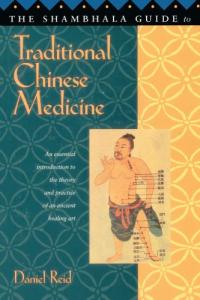
The views above discussion try to communicate the knowledge of modern medicine with the theory of heart in TCM, which is only a preliminary exploration and trial. Surely, there are many defects in my views,I hope that the defects would be corrected by our colleagues and the theory would be perfected, so as to better carry forward TCM.
REFERENCES
[1] LI Jiabang.Traditional Chinese medicine[M].6th edition. Beijing: People’s Medical Publishing House, 2005:27.
[2] HUANG Zhili.Hundreds of traditional Chinese medicine on the highlights[M].1th Edition.Chongqing: Chongqing Press,1988:29.
[3] LI Ting.Introduction to medicine[M].Nanchang:Jiangxi Science and Technology press,1988:249.
[4] YAN Jianhua.The academic analysis:155.
[5] YAN Jianhua. Intensive reading of Nei Jin[M]. 1th Edition. Tianjin:Tianjin Science & Technology Translation & Publishing Co,2007:57.
[6] LU Qiyu.An introduction to Gas Theory of Nei Jin[M]. 1th Edition.Shenyang:Liaoning Science and Technology Publishing House, 1984:59.
[7] QU Songbo.Practical cardiovascular disease of Chinese medicine[M]. 1th Edition. Beijing:Science and Technology Literature Press,1993:516.
[8] QIANG Shiping. Heart Controlling Mental and Emotional Activities Relates with Heart and Brain in the Western Medicine[J].CHINESE ARCHIVES OF TRADITIONAL CHINESE MEDIOINE,2005,23(6):1075-1076.
[9] SHEN Weifeng.Frontiers of Cardiology[M].1th Edition. Beijing: People’s Military Medical Press,2007:355.
[10] ZHU Wenyu. Human Physiology[M]. 2nd Edition. Beijing:Peking Medical University Press,2002:101.
[11] WEI Ming. Pathology[M].1th Edition. Shanghai:Shanghai scientific & Technical Publishers,2001:61.
[12] QIAN Yuping. Epidemiology[M]. 2nd Edition. Beijing:People’s Medical Publishing House, 1986:53
[13] DONG Chenlang,Tao shouqi. Practical Cardiology[M].1th Edition. Shanghai:Shanghai scientific & Technical Publishers,1978:51.
[14] WANG Yongjin.Medical cell biology[M].1th Edition. Beijing:Science Press,2002:84.
[15] SU Chenglian. Modern heart disease of Chinese medicine[M].1th Edition. Beijing:Beijing scientific & Technical Publishers,1997:18.
[16] PAN Qianswen,LU Kui,TIAN Ji-mei,et,al. Roles of cardiac-renal reflex in regulating the function Of sodium and water excretion in rabbit kidney[J].Chinese Journal of Pathophysiology 2007,23(6) :1181-1184.
[17] WANG Hongye,SHEN Changqing. Renalase- the New Signal of Relations between Heart and Kidney[J].Chin J Rehabil Theory Pract,2008,14(4):356-357.
[18] ZHAO Lei, GU Rong. renal syndrome[J].Shanghai Med J,2008,31(2);133-134.
[19] YA NG Lili,CHAI Yanfen.The progression of The pathogenesis of Cardiorenal Syndrome[J].Int J Emerg and Crit Care Med,2007,(4):1982-1983.
[20] WANG Shiwen, FEN Quan-zhou. Interaction between heart and kidney disease and control of the diseases[J].Chin J MuIt Organ Dis Elderly,2007,6(2):77-79.
[21] LIN Shanyan. Relationship between chronic kidney disease and cardiovascular disease as a noteworthy and important problem[J].J Diagn Concepts Pract,2006,5(3):201-203.
[22] BIAN Ketao, WANG Liyan,SHAO Xuemin.The Clinical Analysis Of the Cardio-renal Anaemia Syndrome On 53 Patients[J].PJCCPVD,2010,18(1):42-44.
百度搜索“爱华网”,专业资料、生活学习,尽在爱华网!
 爱华网
爱华网